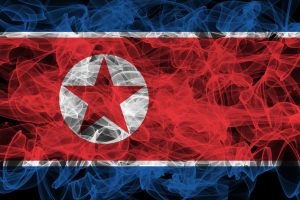North Korea launched an unidentified projectile at 9:30 a.m. Korea Standard Time from the Sunan area in Pyongyang on Wednesday, but the launch is assumed to have failed immediately after liftoff, South Korea’s Joint Chiefs of Staff (JCS) said in a brief statement.
The JCS has not provided further details on the North’s projectile, while saying South Korean and U.S. intelligence authorities are conducting additional analysis on today’s failed projectile launch in a statement.
Before Seoul’s JCS issued its statement on the North’s projectile launch, Japan’s NHK News first reported that North Korea appeared to have fired a ballistic missile.
Today’s projectile launch came days after Washington issued a statement saying that North Korean reconnaissance satellite tests on February 27 and March 5 involved “a new intercontinental ballistic missile (ICBM) system” that Pyongyang is developing. The new ICBM system Washington referred to was Hwasong-17, a giant version of the North’s Hwasong-15 ICBM system. Hwasong-17 first appeared in a military parade in October 2020.
Washington shared its analysis last week to help prepare for the possible situation of the North testing its new ICBM system “disguised as a space launch.” The North Korean missiles launched on February 27 and March 5 did not demonstrate ICBM range; those missiles flew about 300 km and 270 km, respectively.
Since the North conducted the two reconnaissance satellite tests, the U.S. Indo-Pacific Command ordered intensified surveillance activity in the Yellow Sea between China and South Korea and enhanced readiness among its ballistic missile defense forces in the region, according to the Pentagon.
North Korea’s last failed missile launch was reported in August 2017 when it launched several short-range missiles off its coast. Three months after that, Pyongyang tested its new Hwasong-15 ICBM, demonstrating its capability to target the U.S. mainland. Based on the North’s report that the missile flew 950 km at an altitude of 4,475 km, analysts estimated that the Hwasong-15 ICBM can travel more than 13,000 km on a standard trajectory, while pointing out that it would be incapable of carrying a nuclear warhead such a long distance. In the test, the missile carried a very light mock warhead.
It is unclear whether the North tested its new Hwasong-17 ICBM capabilities in the failed launch today. However, based on Kim’s recent remarks on North Korea’s satellite launches during his field inspection of the Sohae Satellite Launching Ground, Pyongyang will likely test its Hwasong-17 ICBM system disguised as a space launch in the coming months.
The earliest timeline for a reconnaissance satellite launch is on April 15, the 110th birth anniversary of Kim Il Sung, the founder of North Korea and late grandfather of Kim Jong Un. However, as South Korean president-elect Yoon Suk-yeol is going to take office on May 10, Pyongyang may choose to launch its reconnaissance satellite into orbit right after Yoon’s inauguration.
Additionally, North Korea appears to have been restoring the Punggye-ri nuclear site, the North’s main nuclear test site. Kim had publicly dismantled the site a month before his first summit meeting with then-U.S. President Donald Trump in Singapore in 2018. Washington and Seoul would view the move to restore the nuclear test site as old school brinkmanship from Pyongyang.
Nuclear talks have been stalled since the failed Hanoi Summit in 2019, despite consistent outreach from the Moon administration. In two months, a new conservative hawk will take the presidency in South Korea. Given the circumstances, the arms race is likely to be intensified amid the North’s missile tests and the upcoming resumption of South Korea-U.S. joint military drills. If Kim continues to carry out bold initiatives to achieve his five-year military modernization plan, it would be a strong reason for Yoon to focus on a military build-up, not inter-Korean talks. During the campaign, Yoon pledged to deploy more Terminal High Altitude Area Defense (THAAD) anti-ballistic missile defense systems.

































